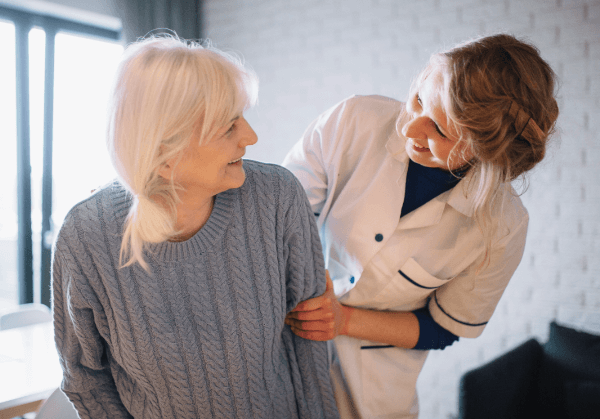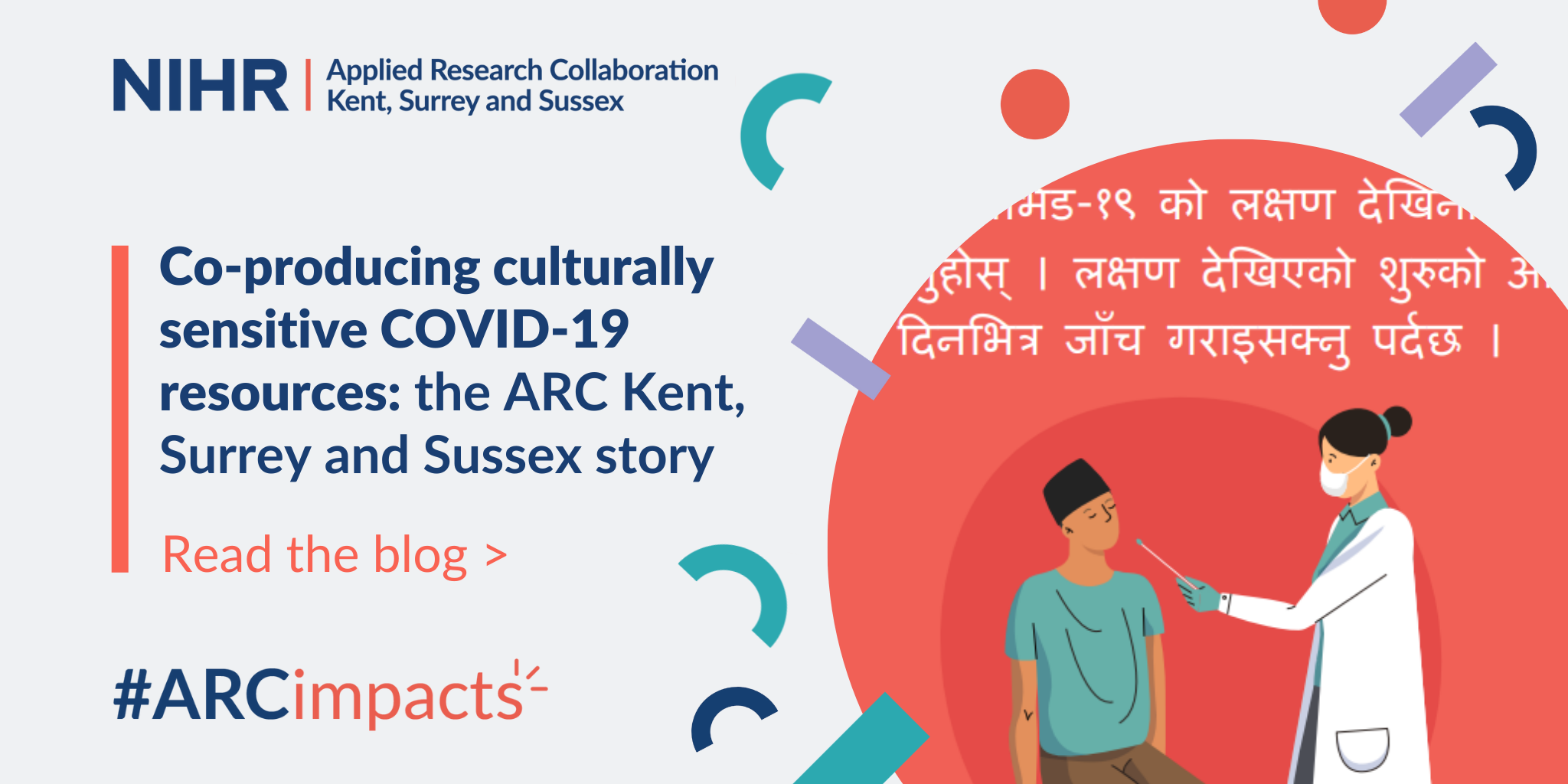By Rebecca Sharp, ARC KSS Implementation Manager, Social Care
Early on in the COVID-19 pandemic, it became clear that people from ethnic minority communities in the UK were experiencing a disproportionate impact from COVID-19.
Numerous studies indicated that people from ethnic minority groups were more likely to be admitted to an intensive care unit and die from COVID-19, compared to their white counterparts. Older adults from ethnic minority communities were also particularly at risk of poor health outcomes from COVID-19 due to age-related vulnerabilities such as hypertension, diabetes, cardiovascular disease and other environmental factors.
Some of the existing research we examined showed that culturally-tailored health communication and interventions were more acceptable and increased understanding uptake within these communities. And yet, although we found that the majority of public health guidance on COVID-19 was available in different languages, some of these translations where often literally translated and lacked the necessary cultural nuances to help people truly understand the messages that they were trying to get across.
So, we decided to fund a rapid response research project that focussed on co-producing culturally-sensitive COVID-19 resources, aimed at older members of the Nepalese and Hindi communities. Led by Dr Priya Paudyal and a team of researchers from Brighton and Sussex Medical School, University of Sussex and University of Kent, the project's aim was to increase understanding of preventative measures, improve engagement with healthcare professionals and improve health outcomes.
To create the biggest impact, we also needed to make sure that we turned this project around quickly together with the right resources that would help increase awareness and understanding of COVID-19 with members of these communities.
Over the course of six months, we embarked on co-producing the information needed, to make sure it captured even the most subtle, cultural differences to increase understanding of COVID-19 virus, including Government restrictions and advice to these communities.
We knew that building relationships and working with the Hindi and Nepali-speaking communities as full co-partners on the project, in equal partnership, needed to be at the forefront of our work. We needed to listen to them to help us explore current understanding and beliefs, identify gaps in knowledge, decide what information should be included and in what format the information would be best received.
Consequently, we carried out a number of semi-structured interviews with Indian and Nepalese older adults and their families, engaged with numerous community organisations, and held interviews with healthcare professionals who were also involved with these communities.
From the outset of the research project, our co-production approach reflected the personal experiences and needs of older adults from these communities and their families.
The resources included digital and printed leaflets in Nepalese and Hindi languages and offered simple and public health information about COVID-19. They were written containing messages that would not date quickly so that they could still be used throughout the course and evolution of the pandemic, including: what is COVID-19? what are the main symptoms? and, how does it spread?
Our leaflets were widely-distributed and well received by local community groups, practitioners; health and social care providers and commissioners; diversity and inclusion leaders; as well as public health colleagues across Kent, Surrey and Sussex. But, what's most exciting and unexpected is how the resources were also well received more than 4,400 miles away from Kent, Surrey and Sussex. It was the Nepalese media who picked up on our resource, just as the crisis was unfolding in Nepal and infection rates were soaring, translating it into local dialects and sharing this information via their news networks.
Although we are still in the process of fully analysing the final impact this project has had, what we do know is that these resources have been very well received. It has demonstrated that by co-producing information with your audience does pay off and can make a positive contribution to the work that we do.
To find out more information about how we carried out this research, how we implemented it and how we are measuring impact, please download our project pathway presentation or watch our project pathway video.
Find out what people had to say about the leaflets here.
Further details of the project can be found here.
More information on the findings of the research published in the British Medical Journal in June 2022 can be found here.








